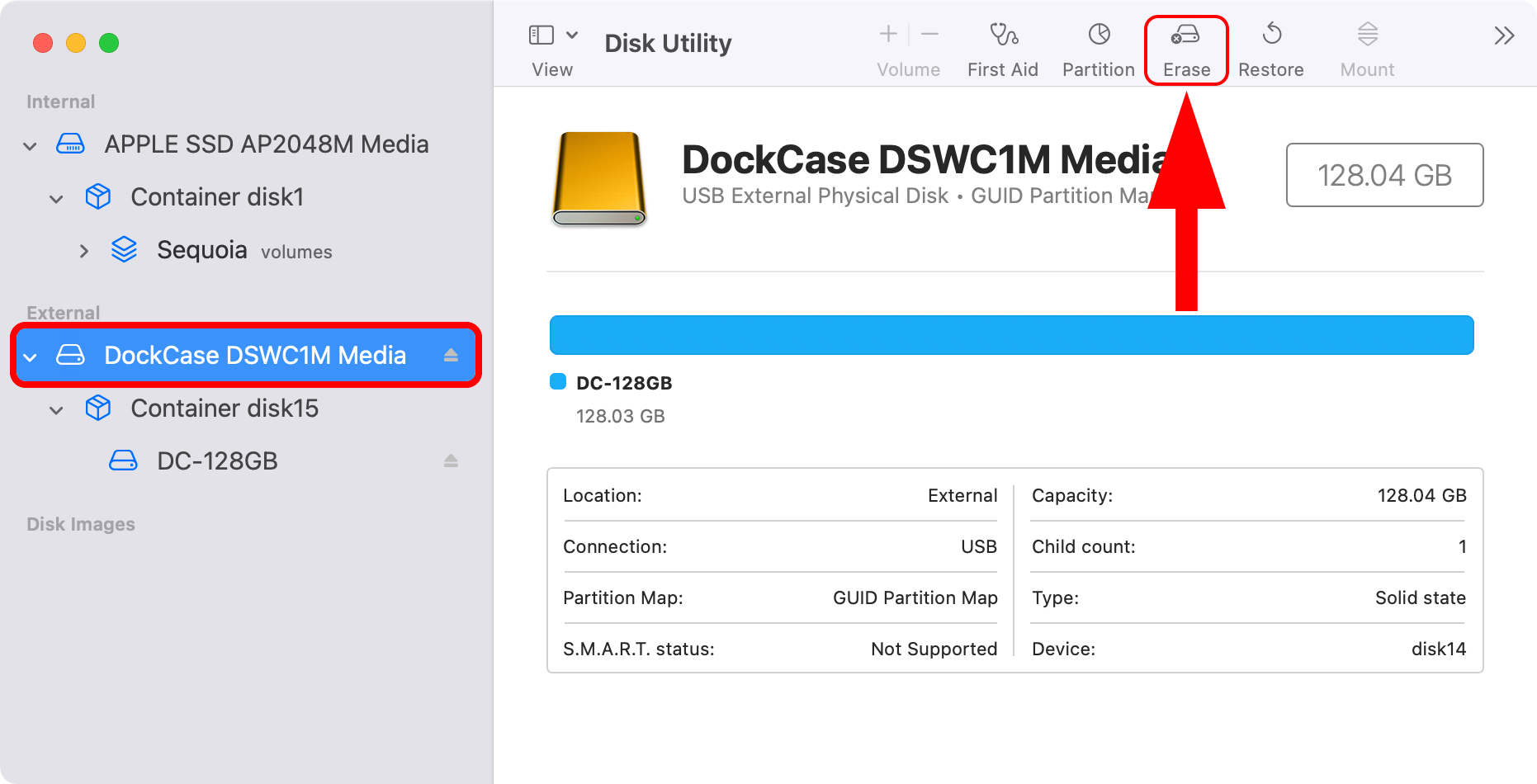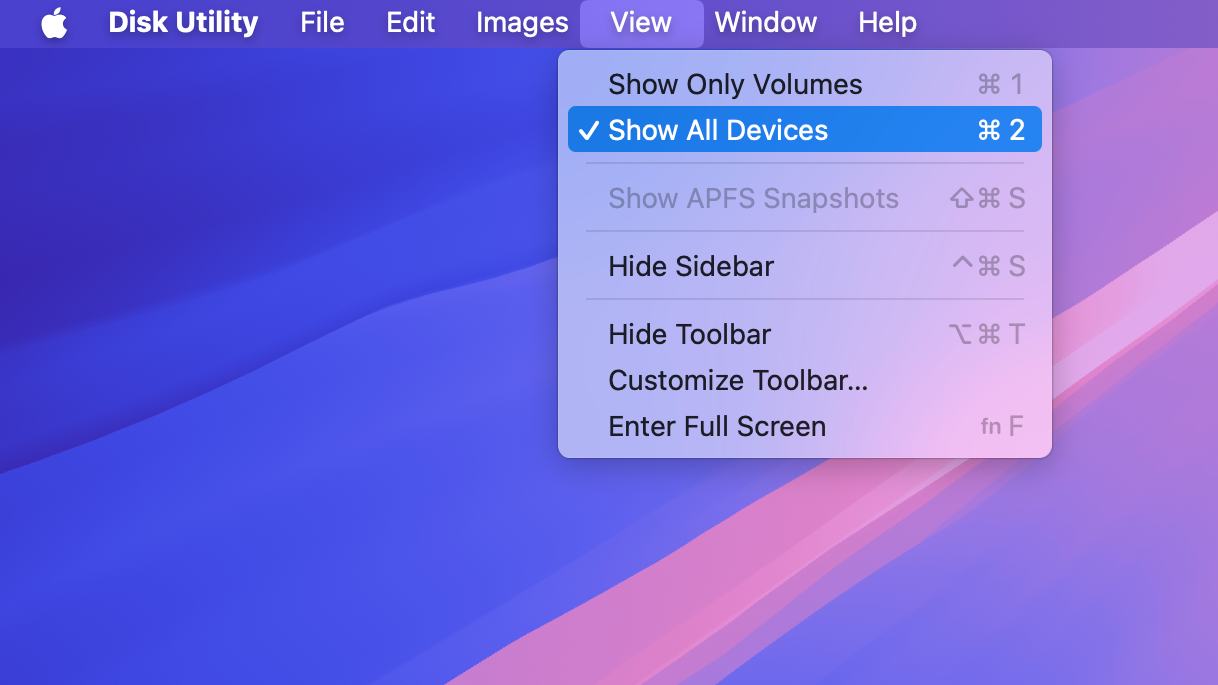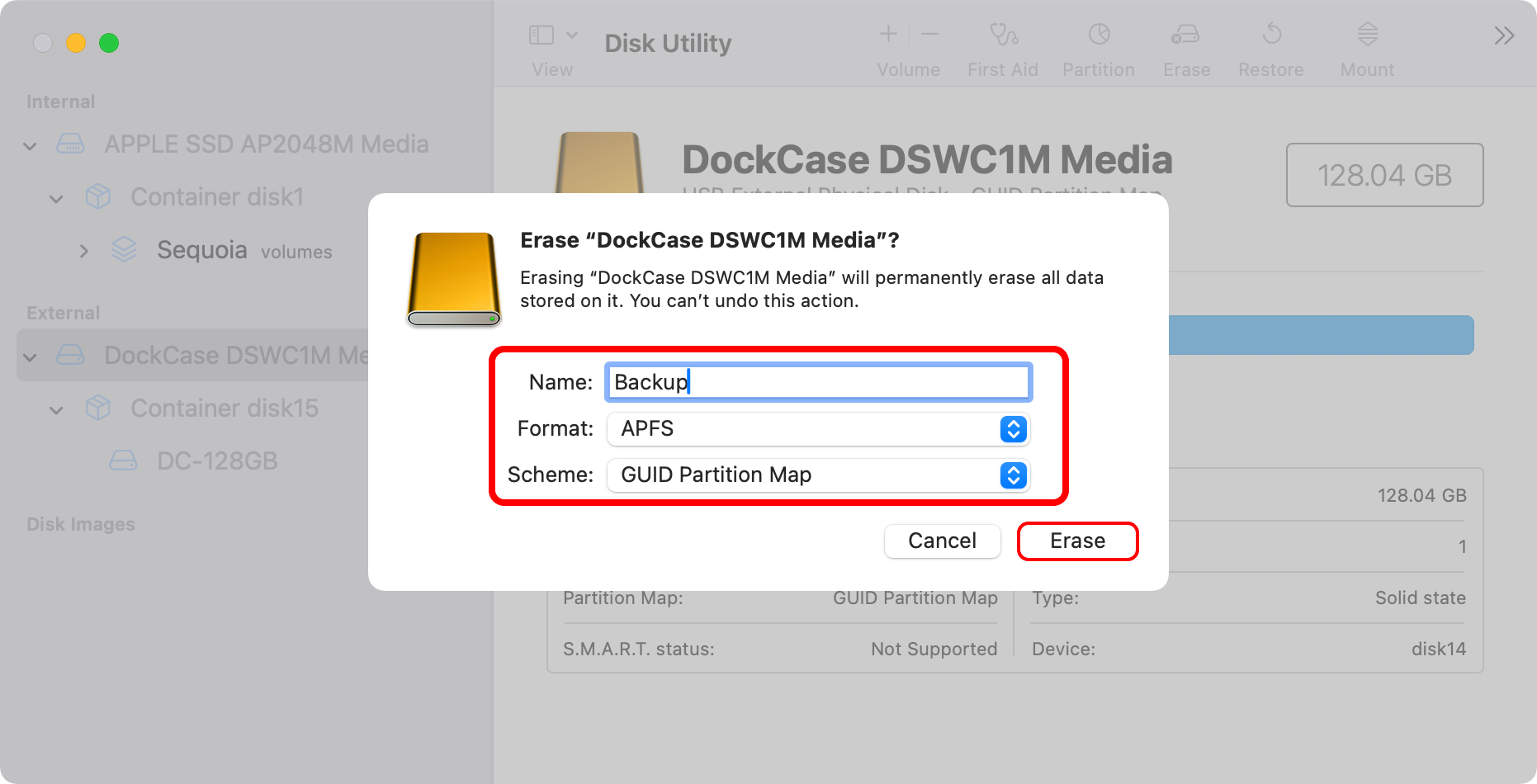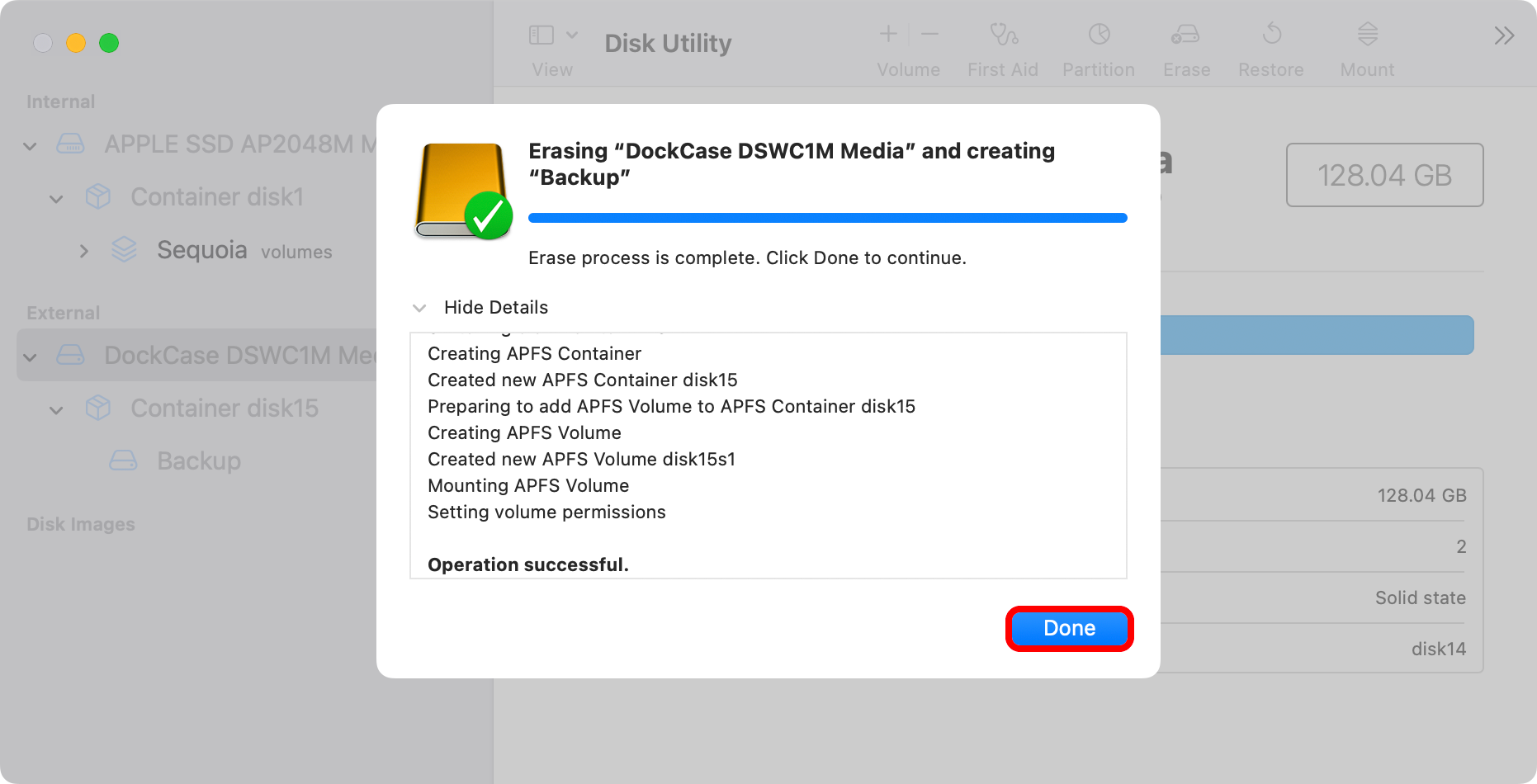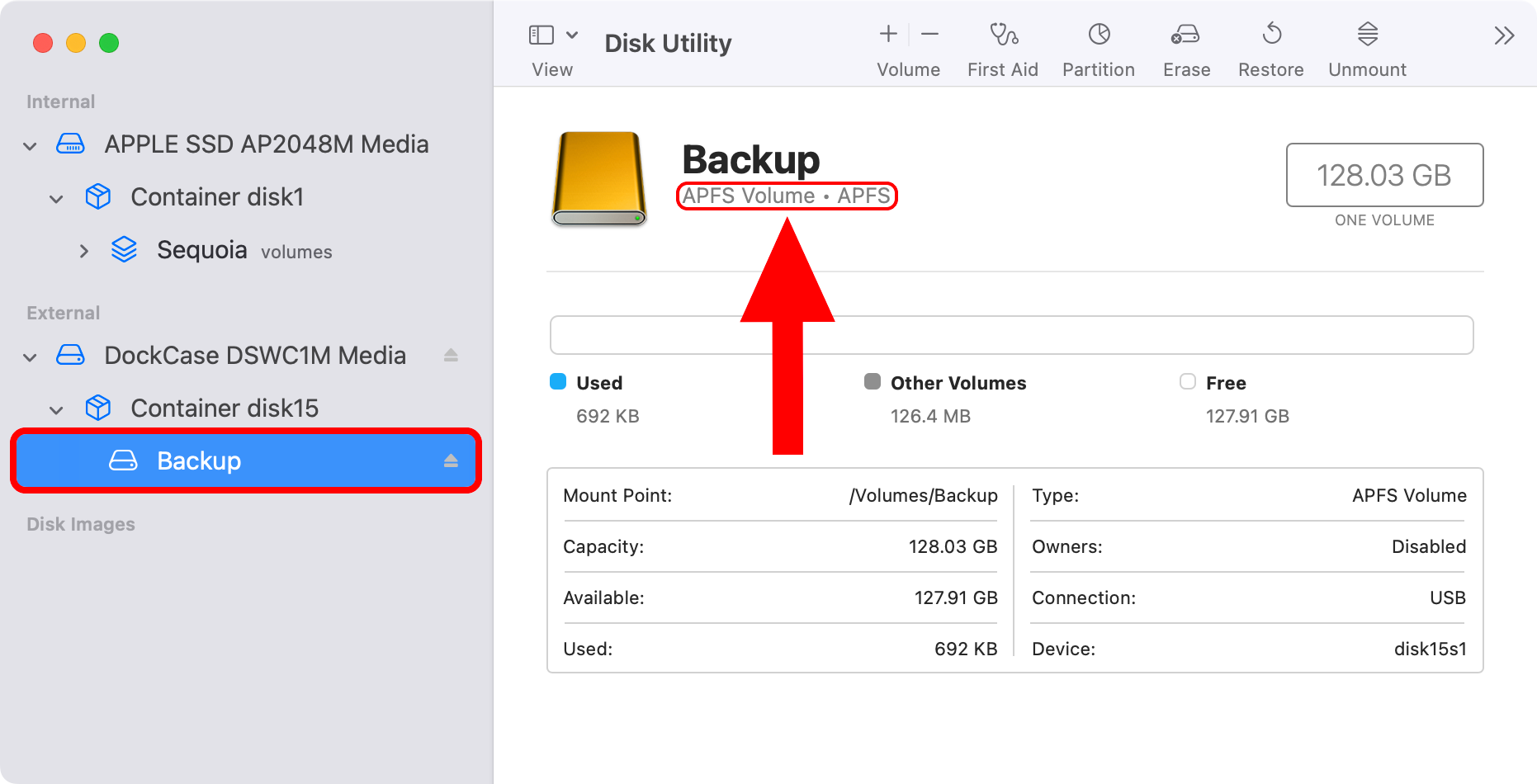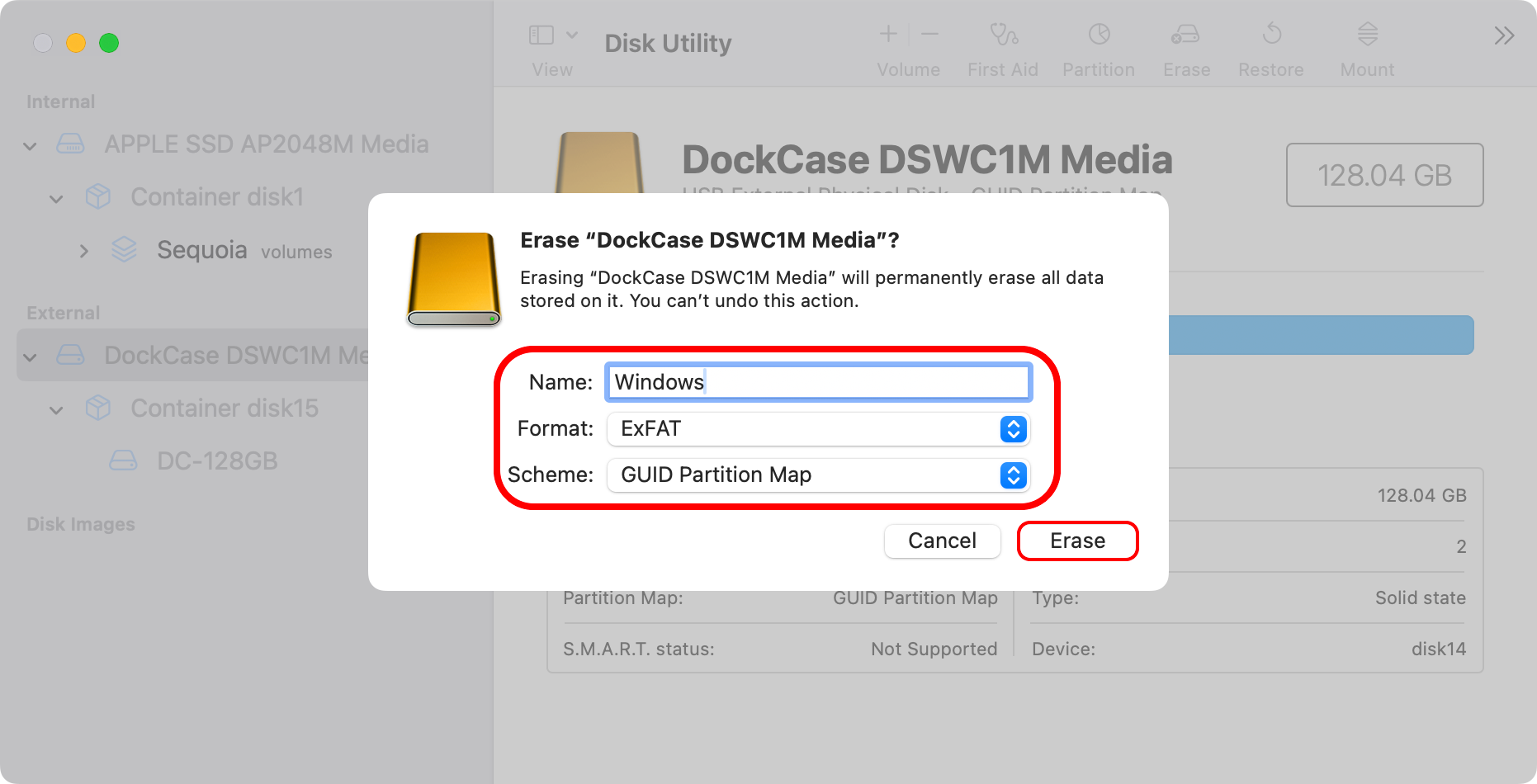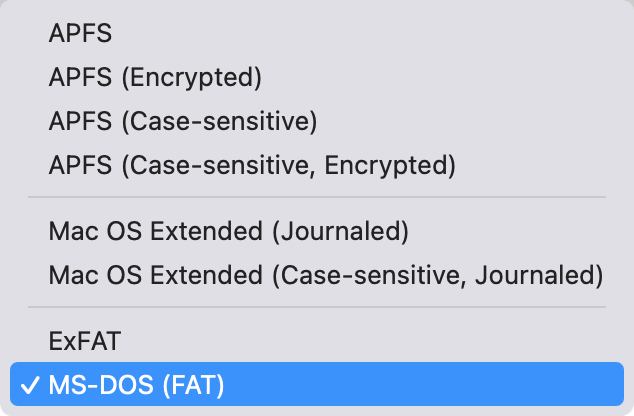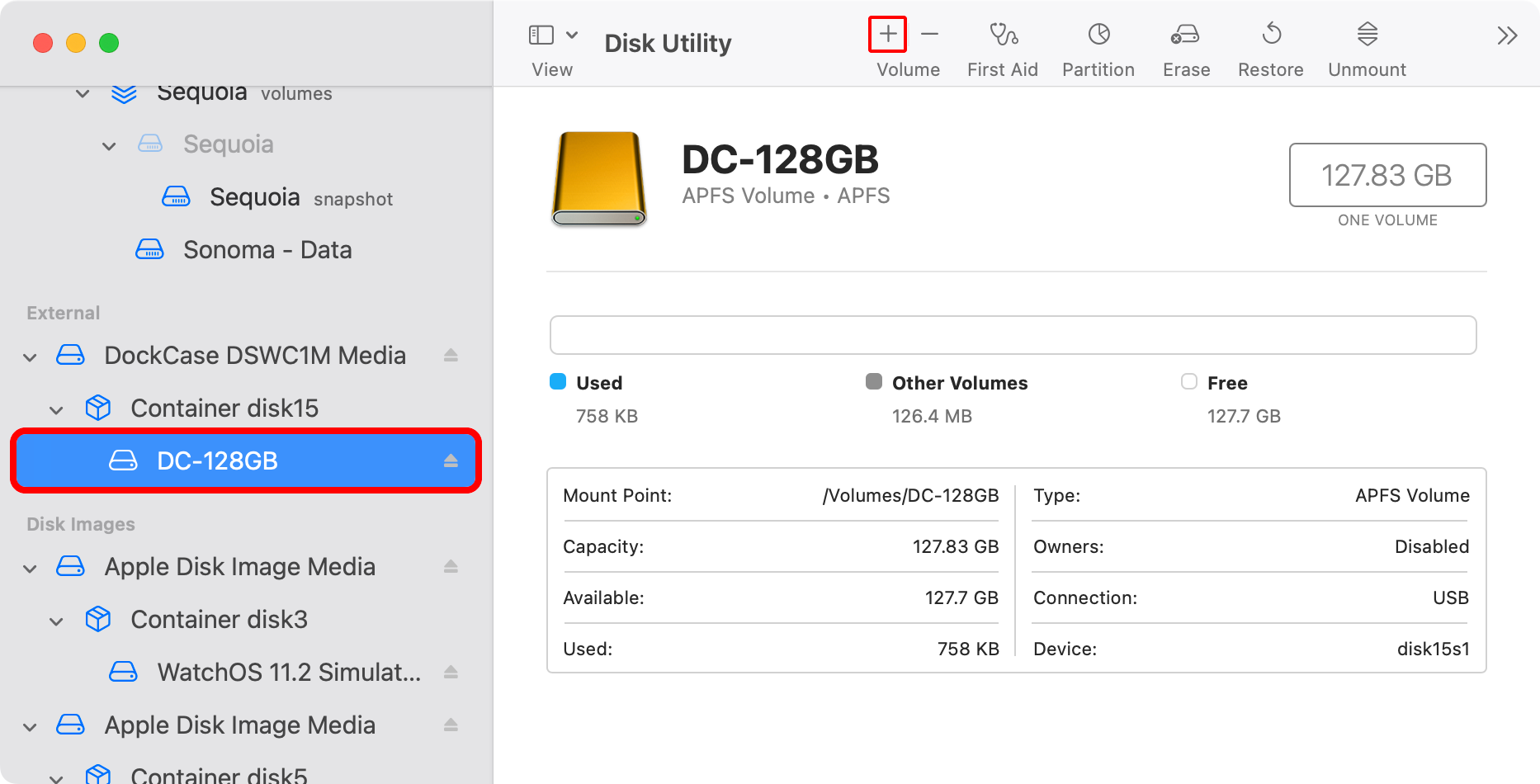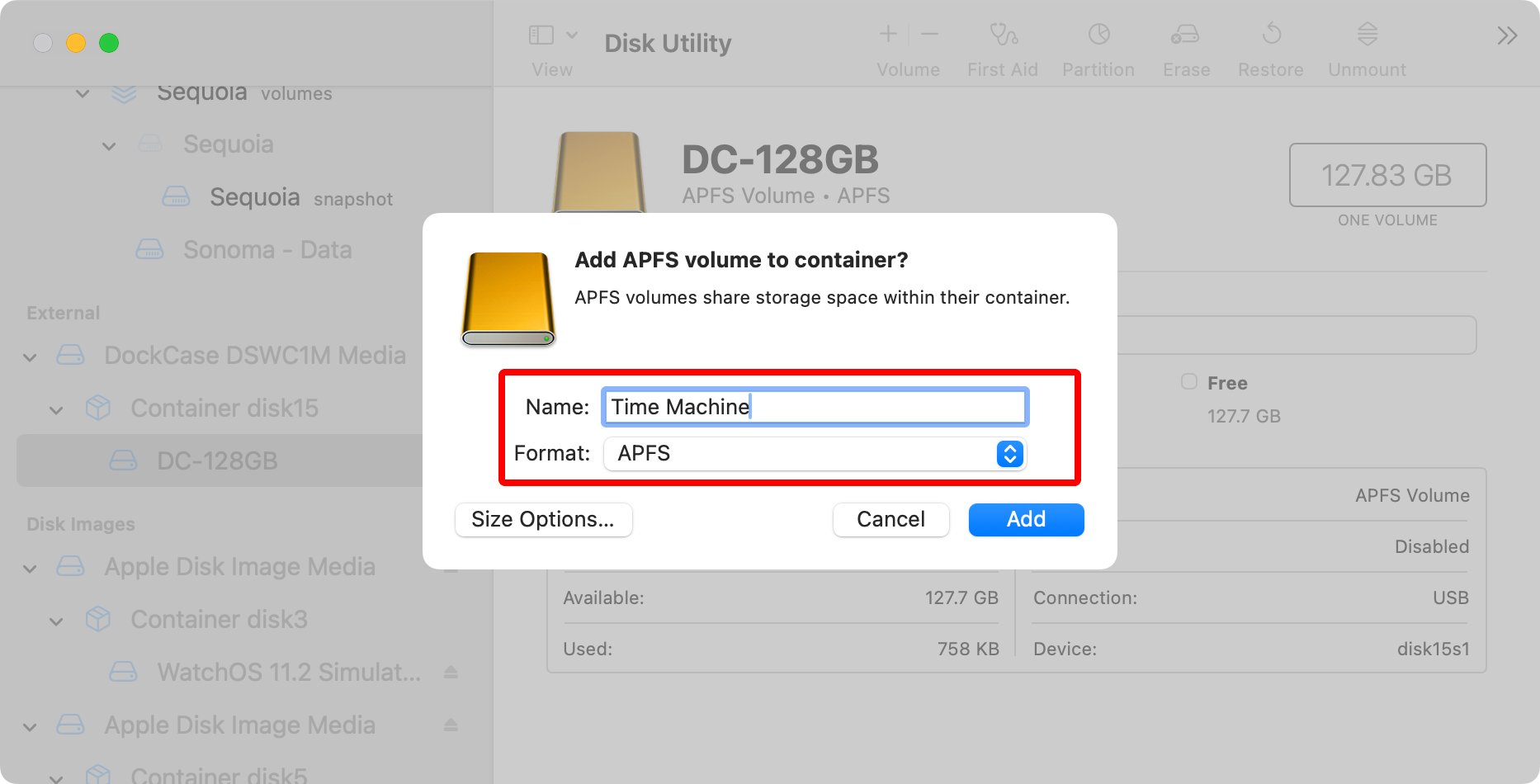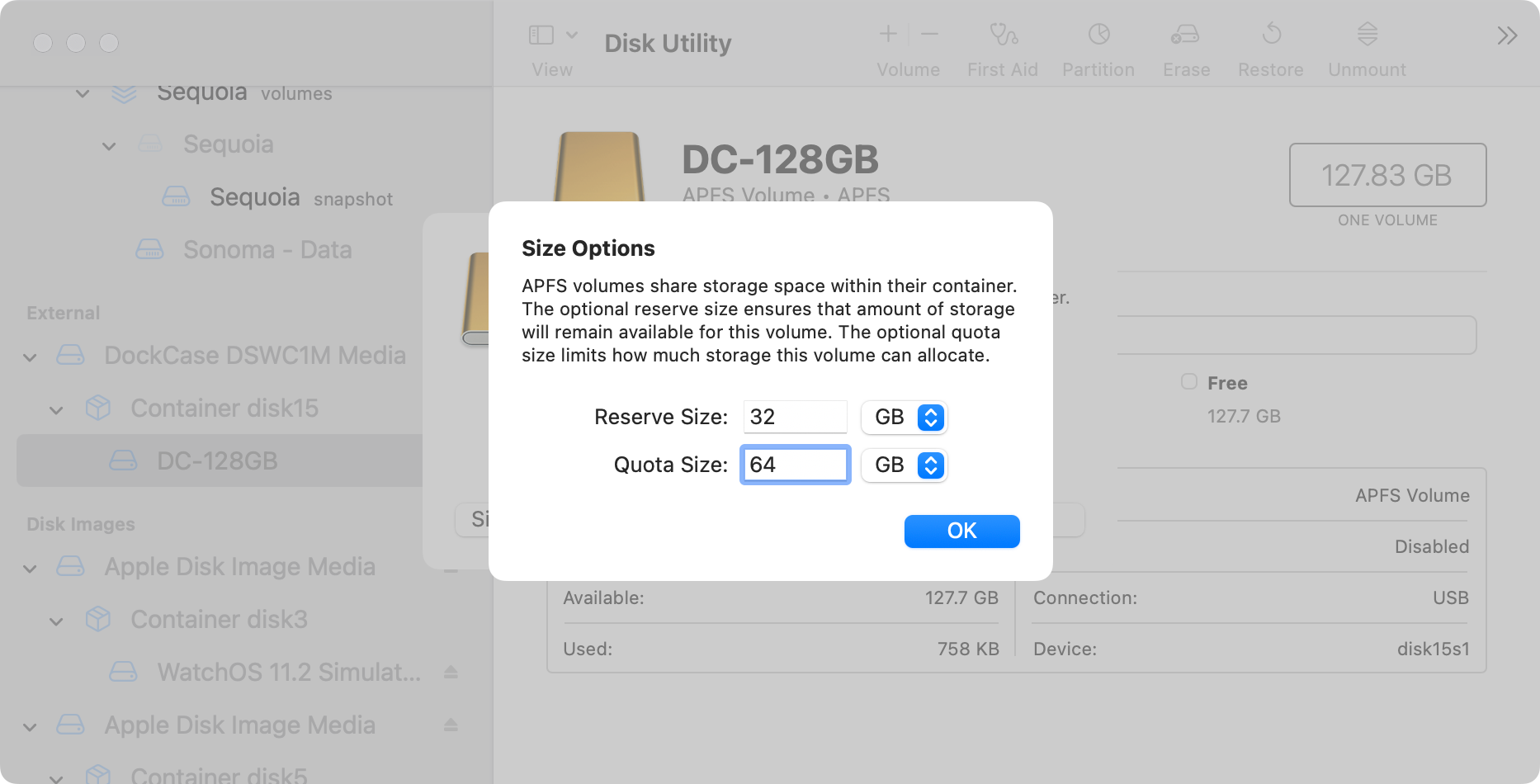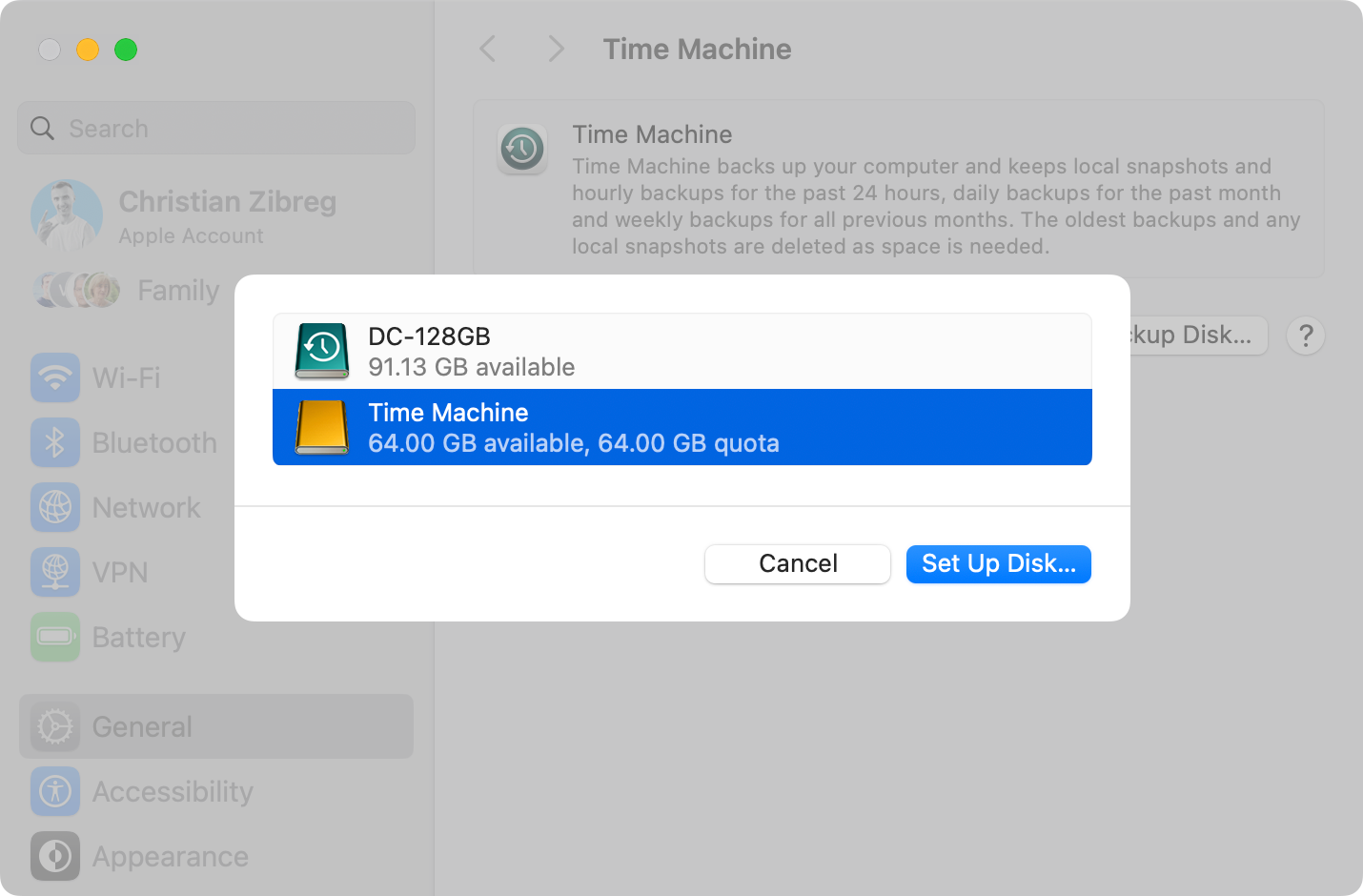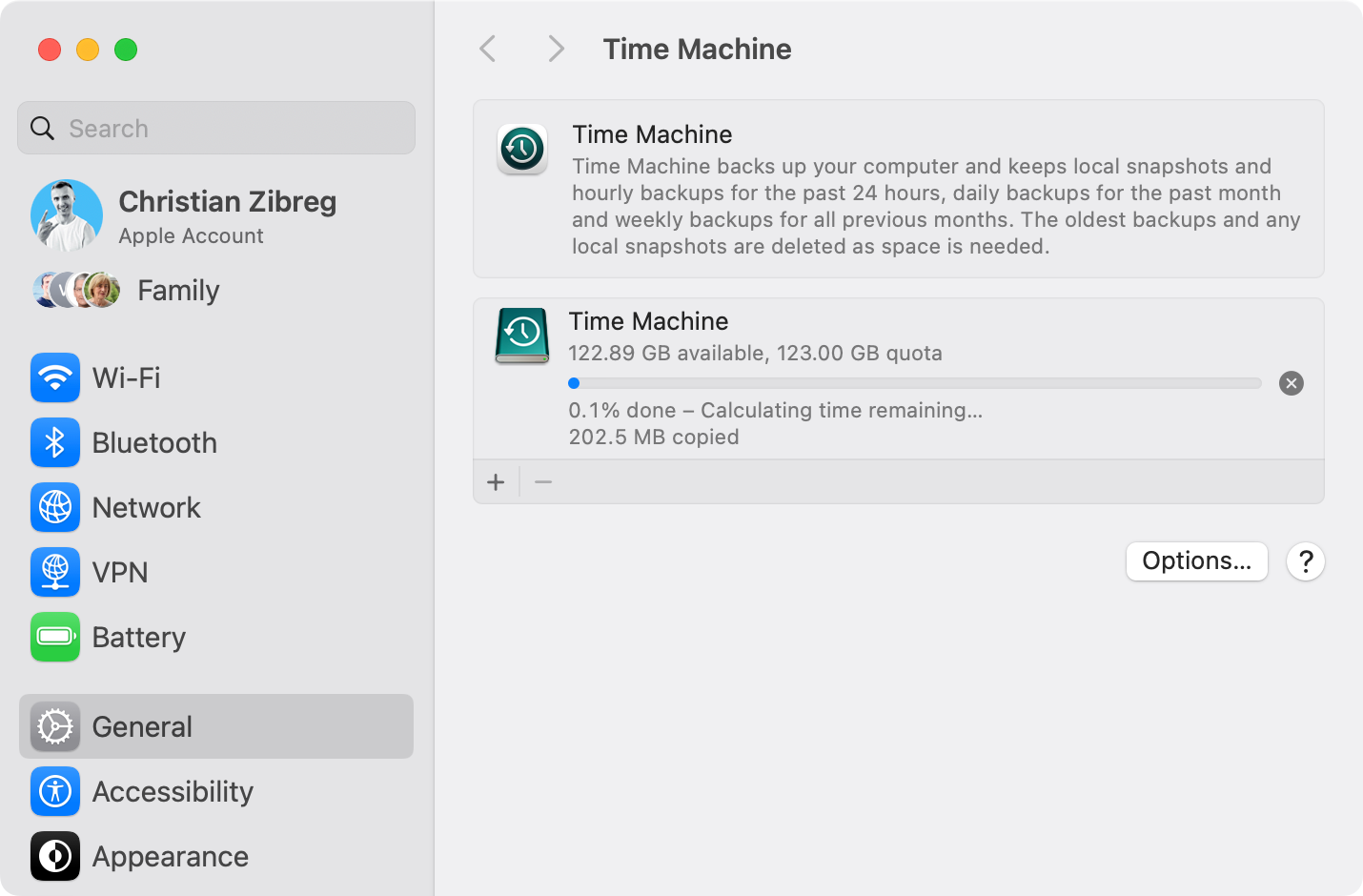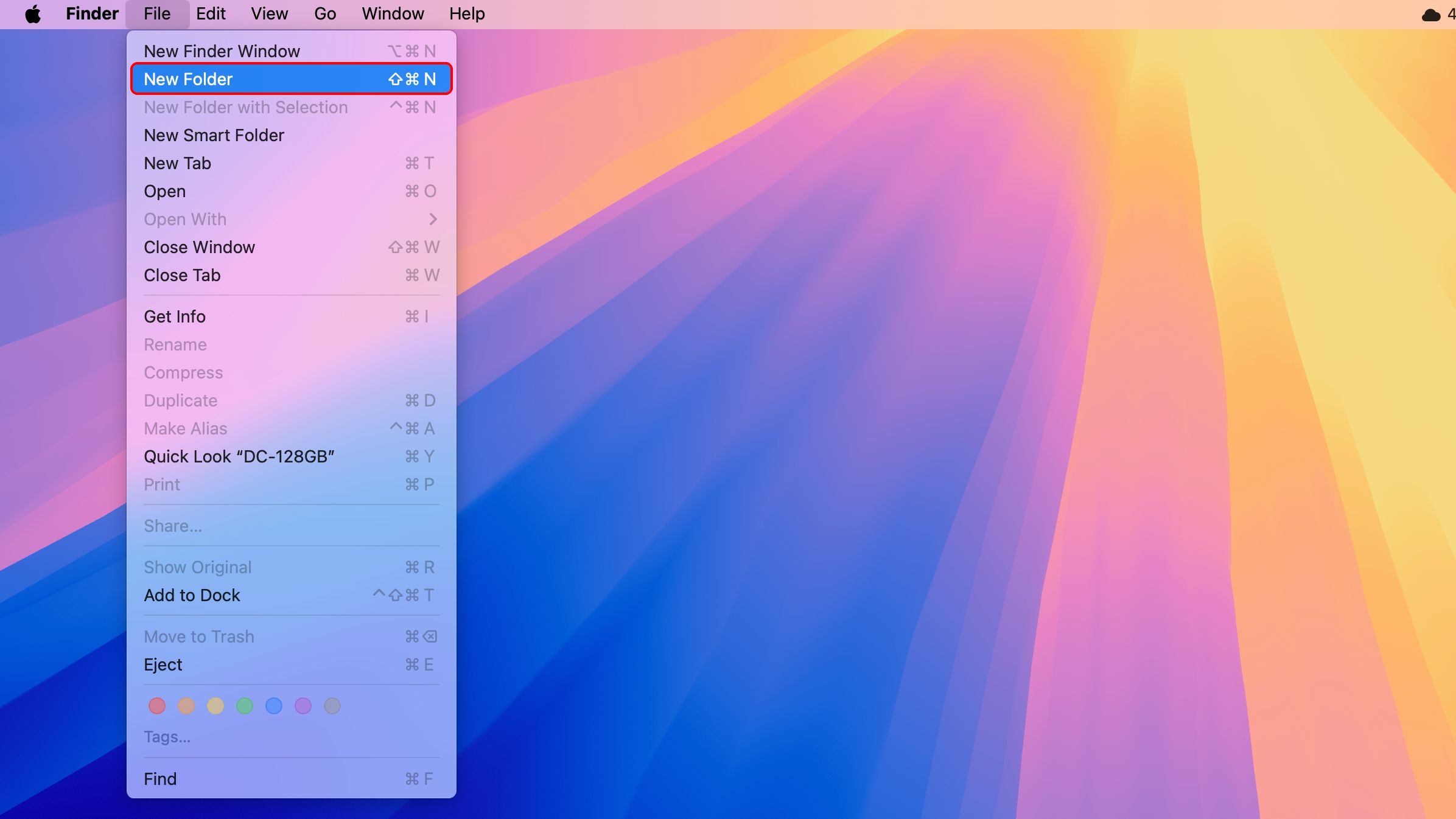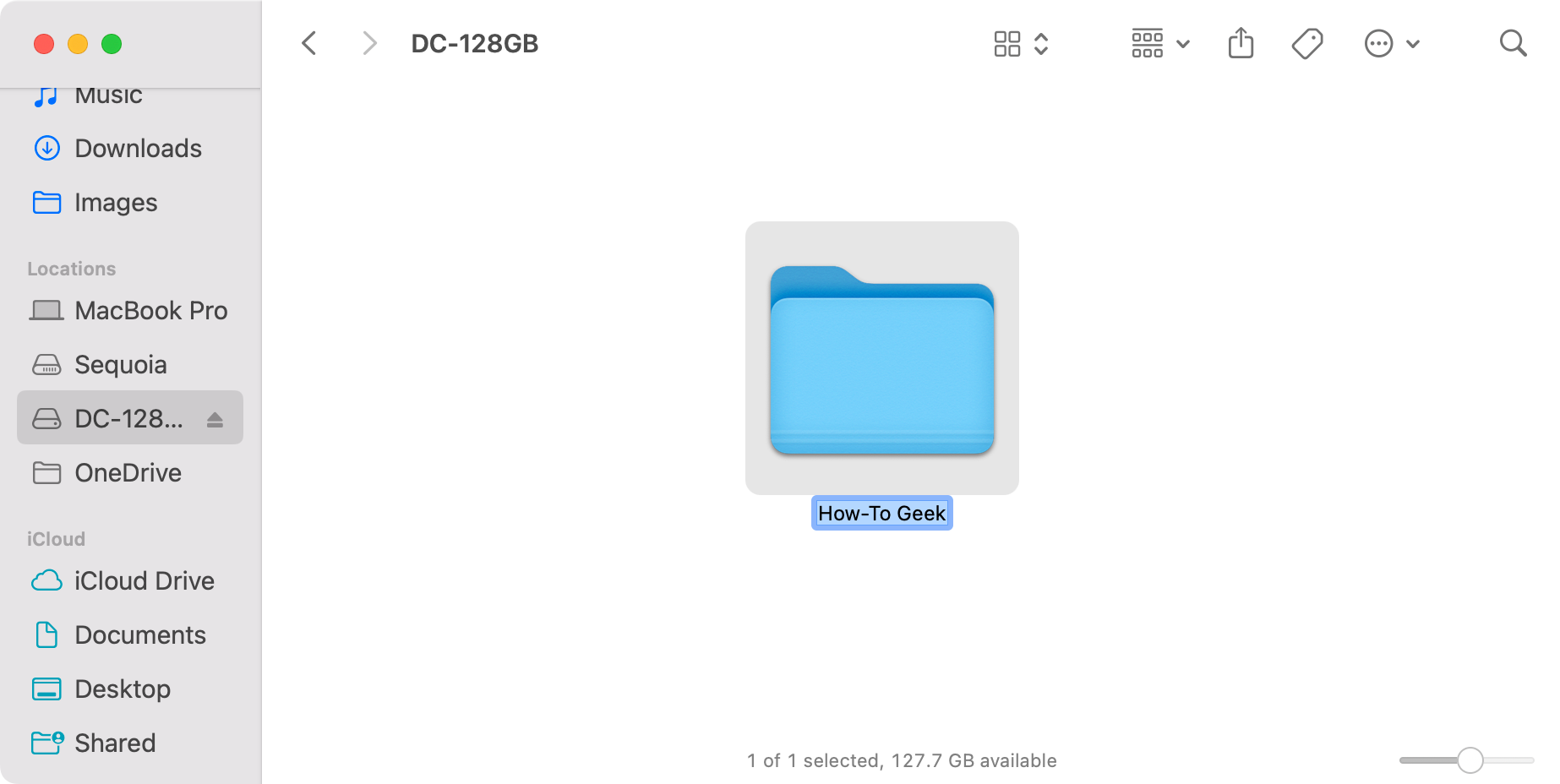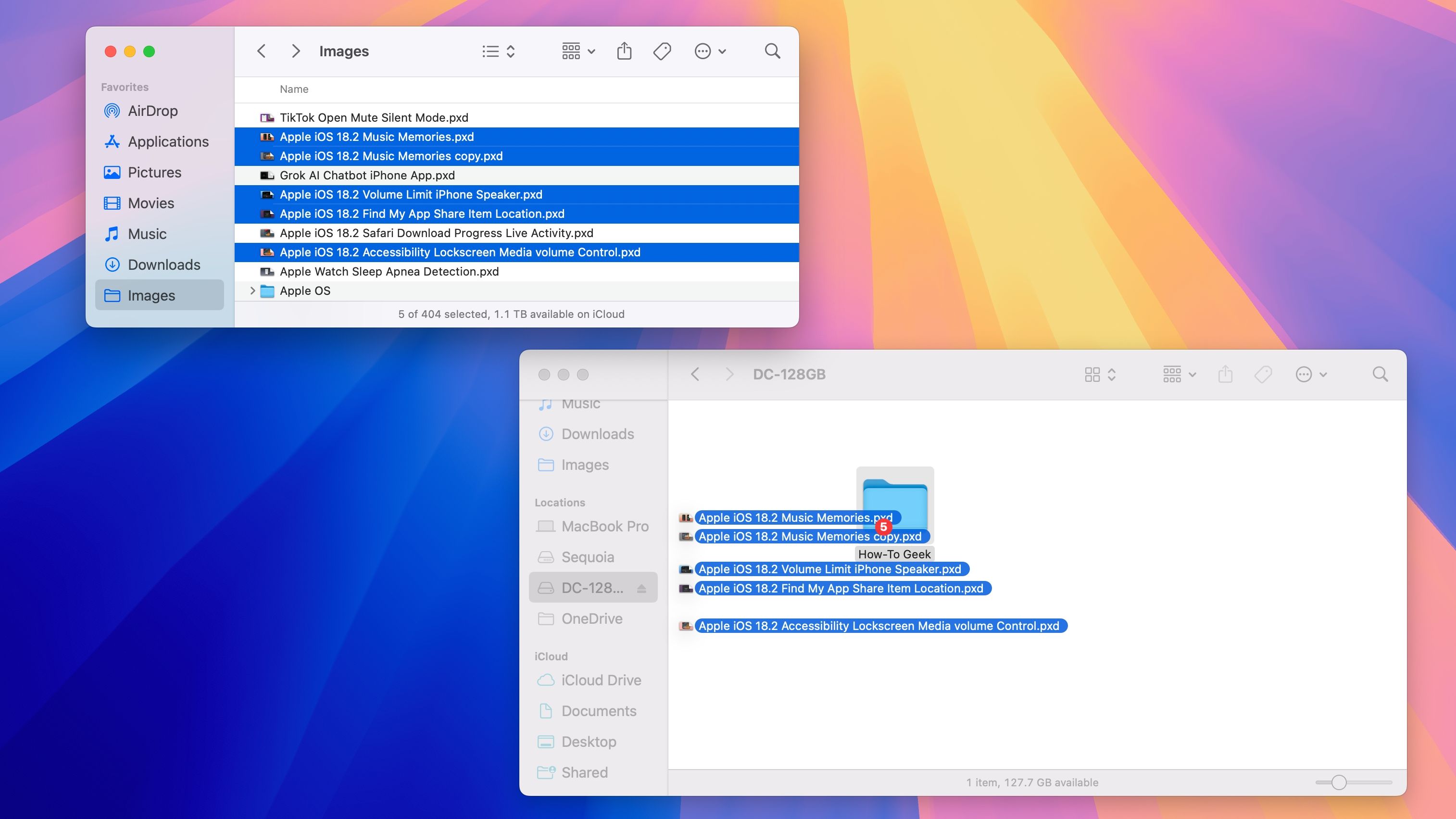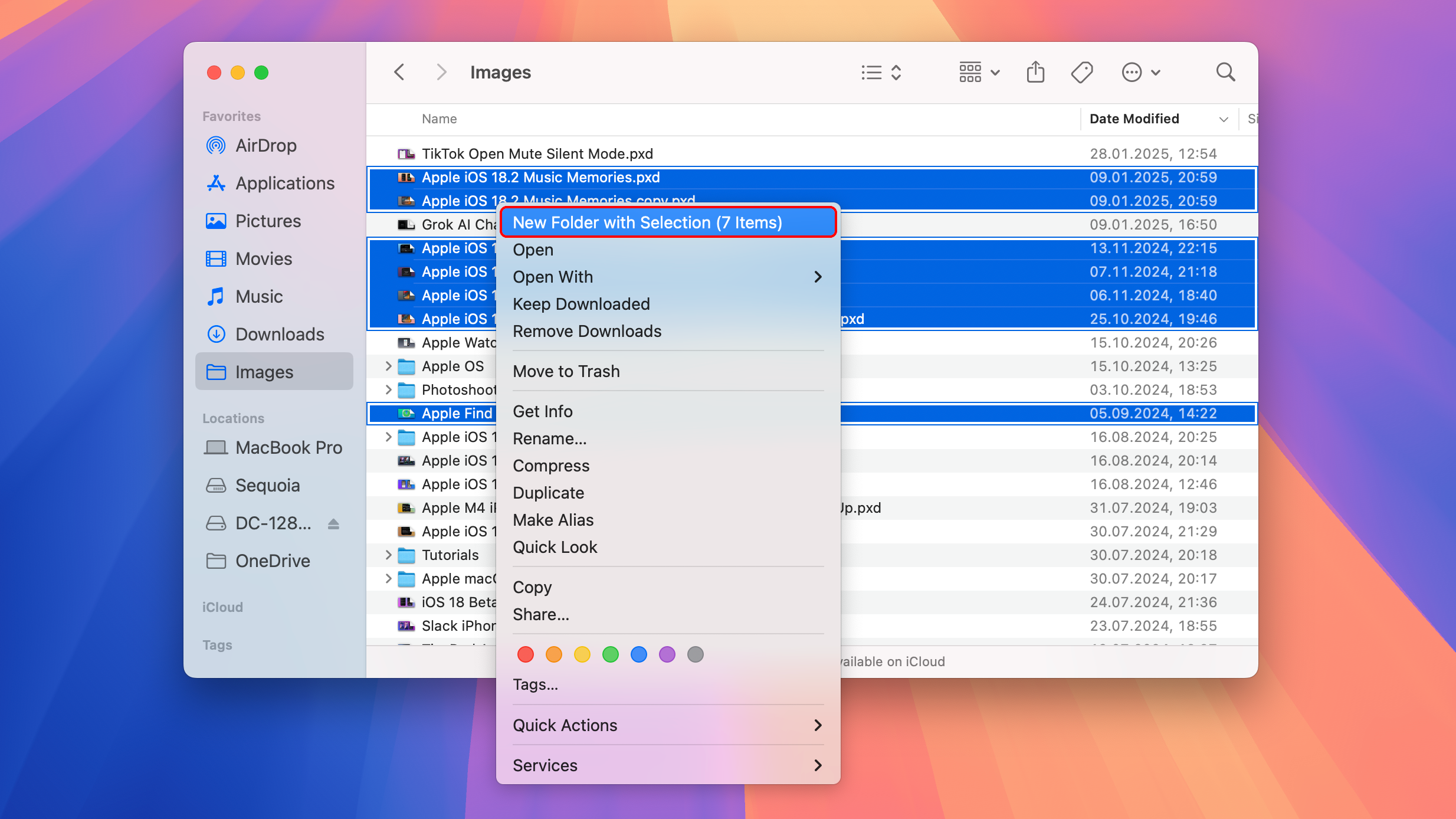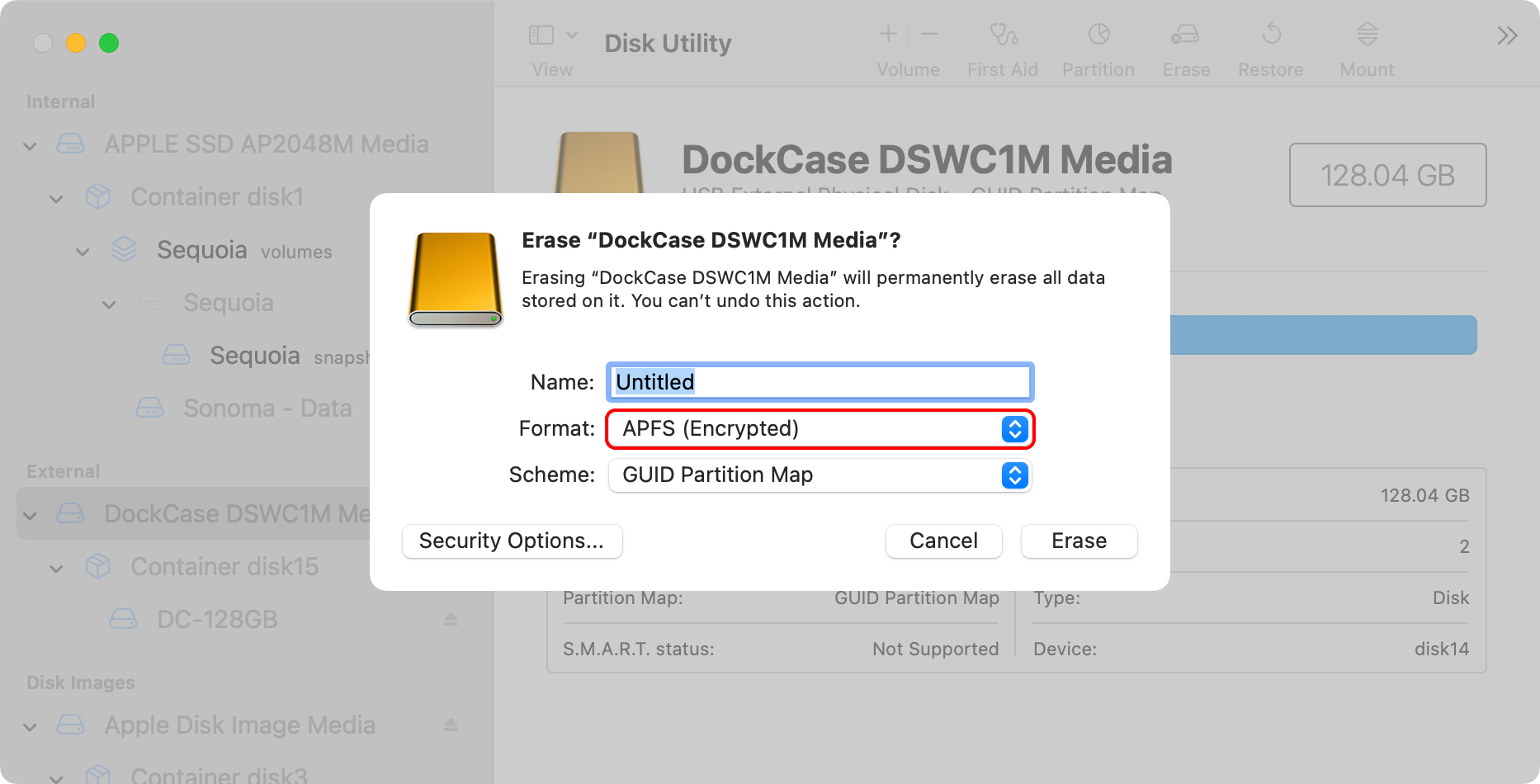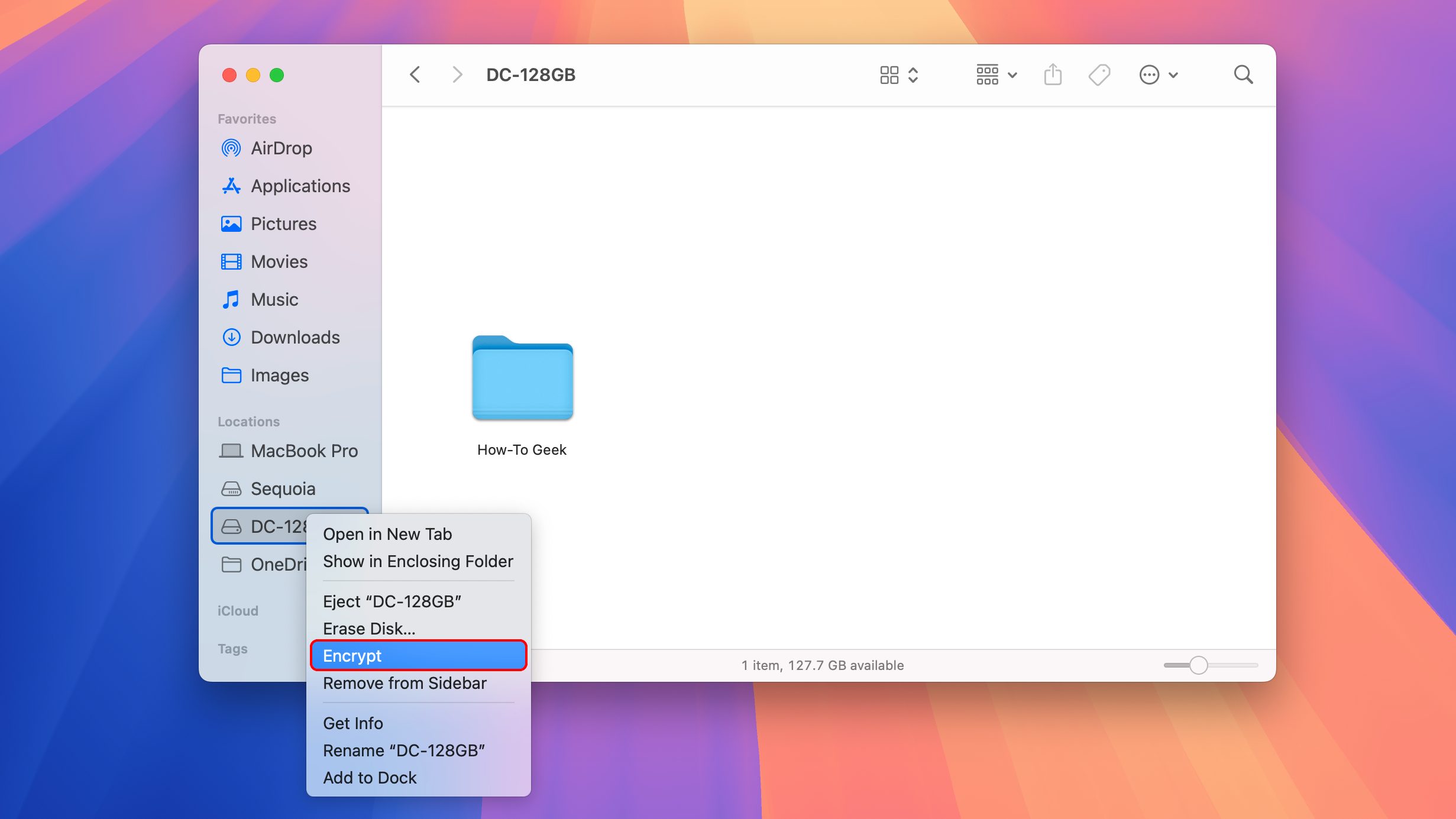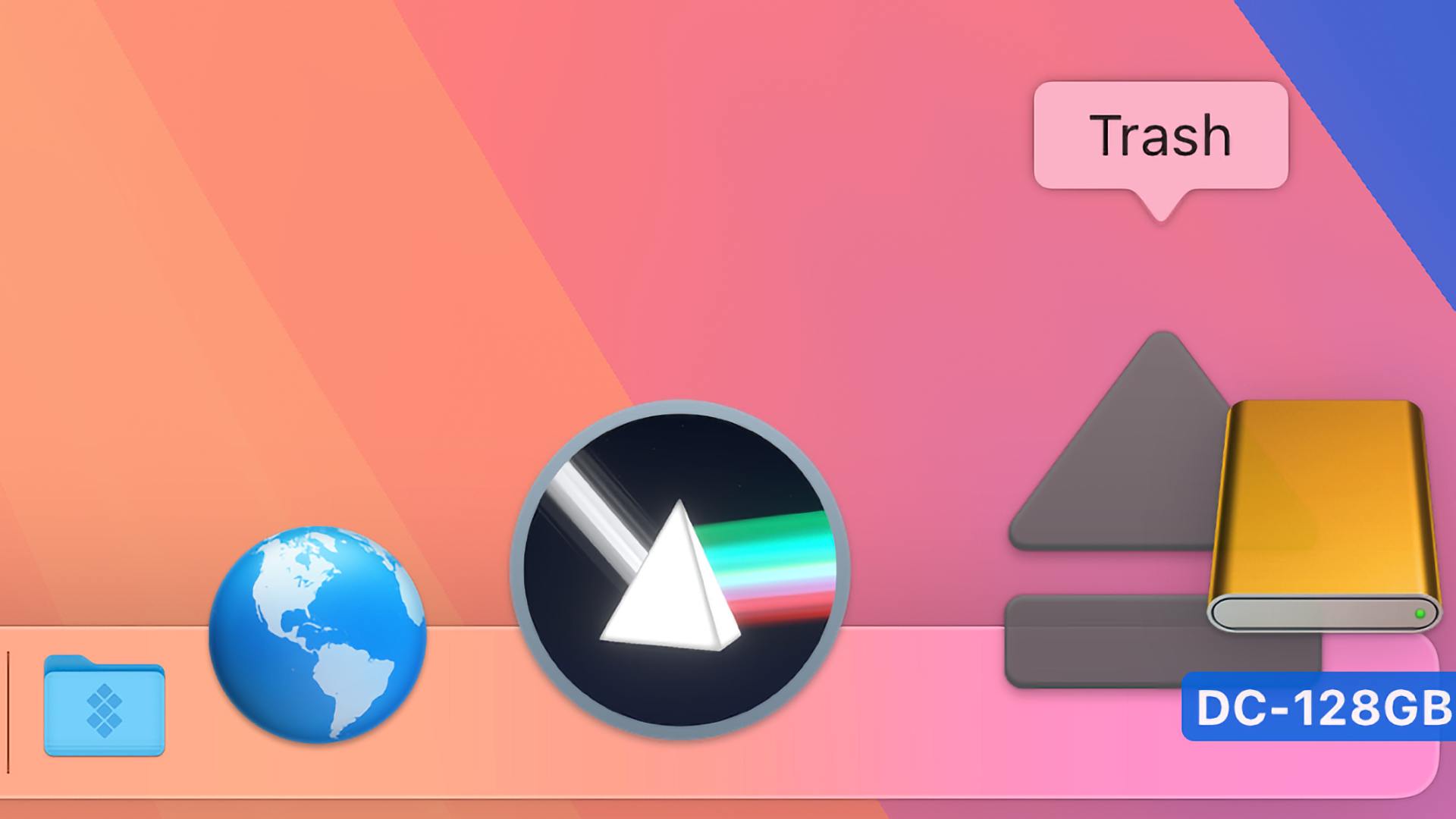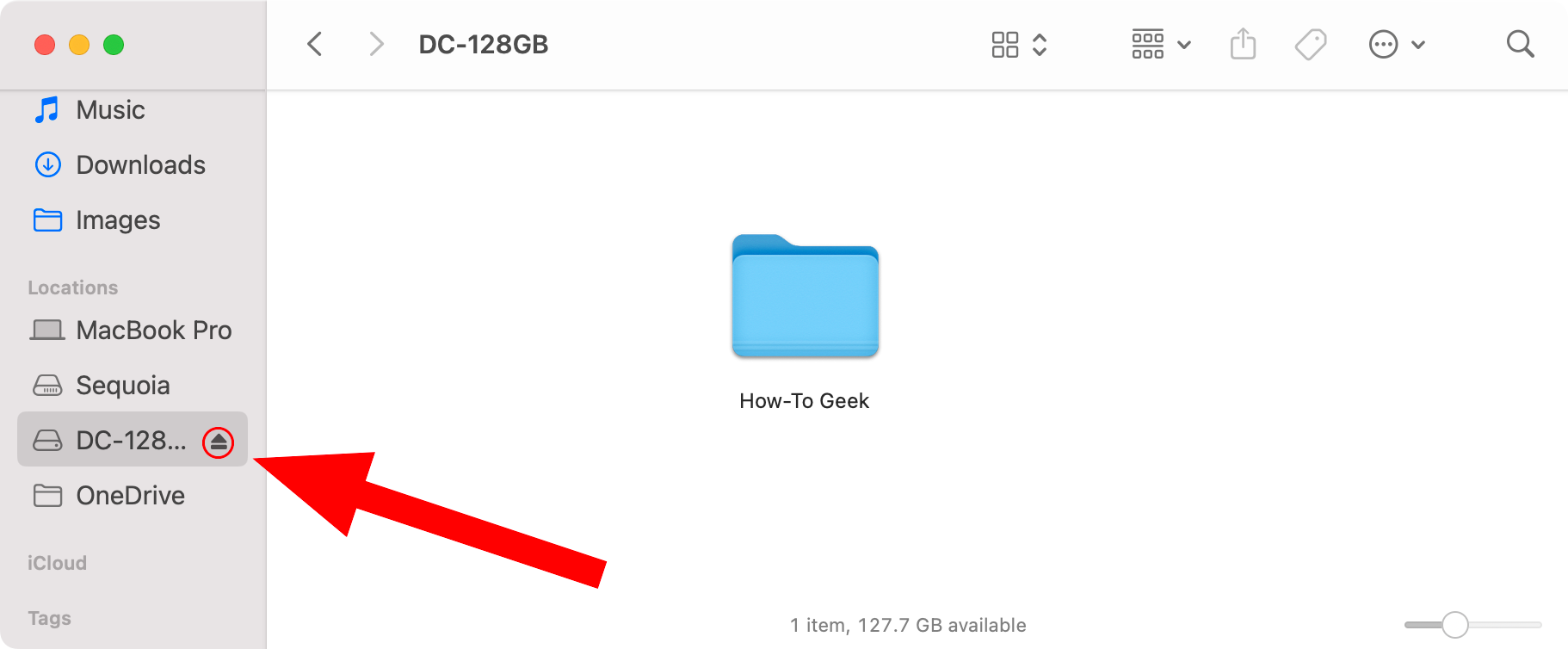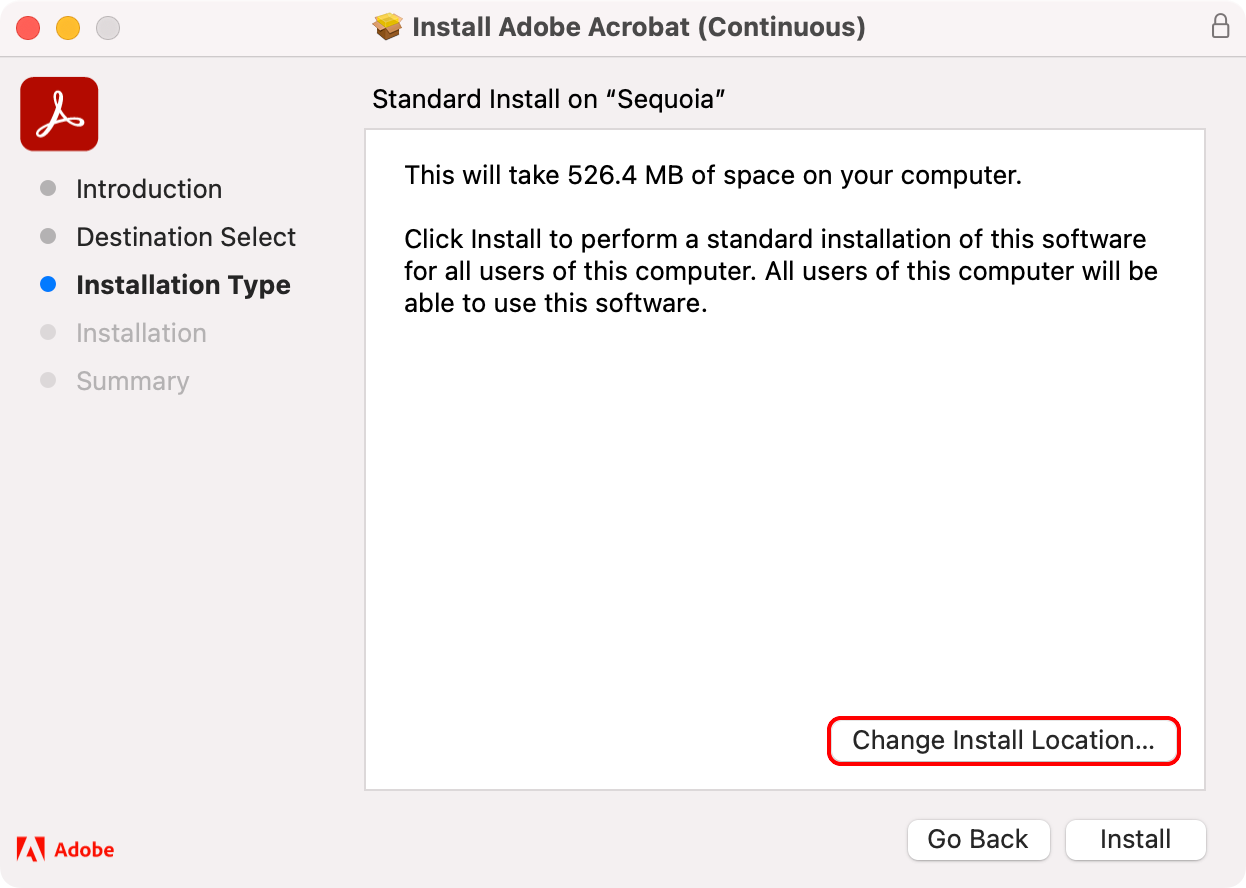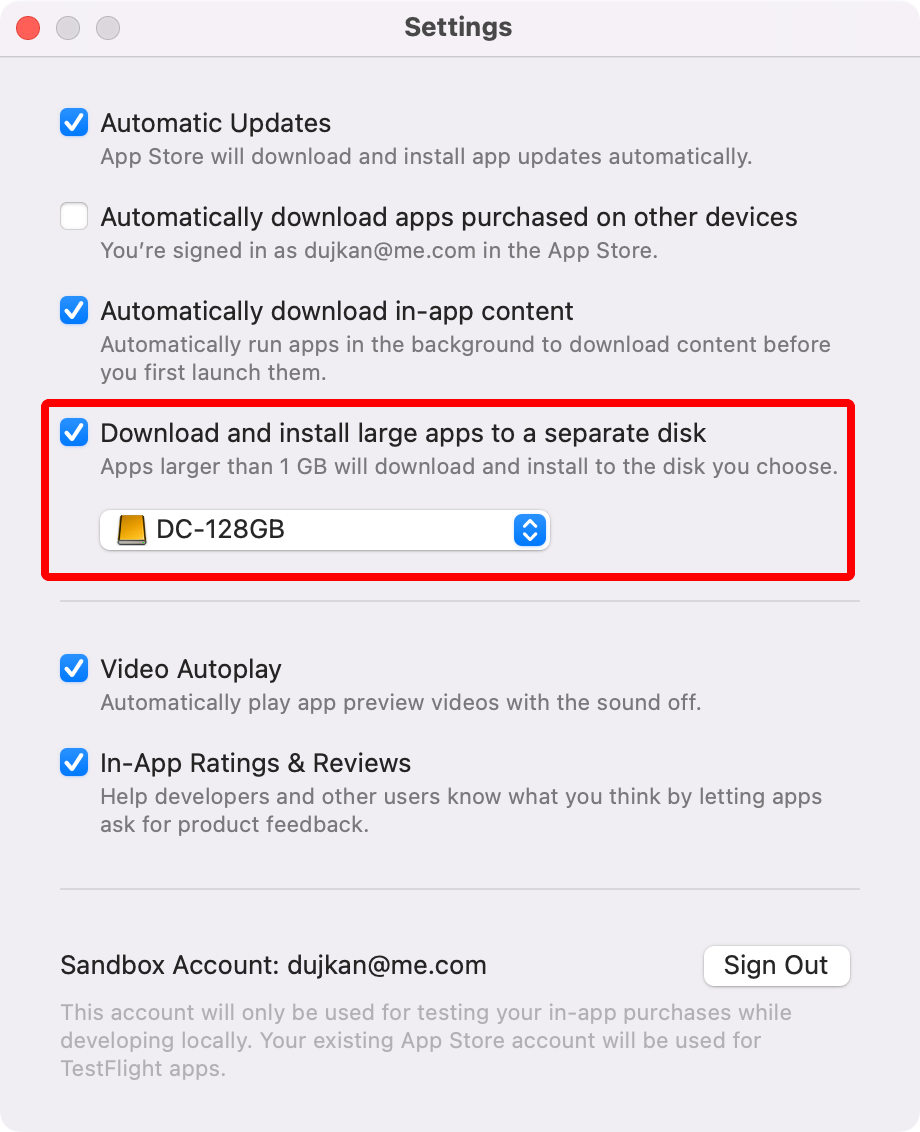Apple charges a premium for built-in storage, so investing in an affordable external drive can help solve your storage problems without breaking the bank. Here are a few tips to ensure you’re making the most of external drives on your Mac.
6
Pick the Right File System Format
Your Mac is compatible with several file systems, including FAT32, exFAT, APFS, and HFS+. Picking the right one for your external drive depends on how you intend to use it. APFS is suitable for drives meant for use on Macs and is compatible with Time Machine. On the other hand, ExFAT and FAT32 are better options for compatibility with Windows and Linux.
The main benefits of APFS over the Hierarchical File System Plus (HFS+), also known as Mac OS Extended, are increased reliability and data integrity, built-in encryption, snapshots, cloning, sparse files, space sharing, and fast directory sizing. HFS+ is best for mechanical hard drives or drives used with older macOS versions.
For Mac-Only use
For Mac-only use, your external drive (especially SSDs) should be formatted with the Apple File System (APFS), the default file format on iPhone, iPad, Mac, Apple Watch, Apple TV, and Vision Pro optimized for solid-state drive storage. With the drive plugged into your Mac, open Disk Utility from the Applications/Utilities folder, select the non-indented disk name containing “Media” in the sidebar, and then click “Erase” in the window toolbar.
If you don’t see the entry, click the View menu and choose “Show All Devices.”
Click the Name field and type a self-explanatory name to identify the disk. I’ve called mine “Backup” because that’s what I use it for. Pick the APFS option in the Format menu and be sure to set “Scheme” to “GUID Partition Map.” To format the drive with the selected settings, click the Erase button.
Once the erase process is complete, click the Done button.
Formatting erases all data on the drive. Beware, you won’t get a warning that you’re about to erase the disk. Always back up valuable data prior to formatting.
To confirm the disk format, select the volume (not the storage device) you just formatted in the Disk Utility sidebar. It should read “APFS Volume” under the volume name on the right.
For Cross-Platform Use
The ExFAT file system is best for cross-platform file transfers between macOS, Windows, and Linux because it supports larger drives, larger files, and almost all newer game consoles and operating systems. In the Disk Utility sidebar, select your drive with “Media” in its name underneath the External heading and click the Erase button in the toolbar.
Provide a custom volume name, then click the Format menu and choose “ExFAT.” Set “Scheme” to “GUID Partition Map” and click the Erase button to format the drive.
ExFAT and FAT32 are not journaled (they don’t keep track of changes), so these and other non-journaled drives must be safely ejected to prevent data loss.
For Best Compatibility
Some USB drives need to be formatted FAT32 for use with systems that are incompatible with exFAT or NTFS, like older Windows versions. Use FAT32 if you need maximum compatibility between devices and won’t be moving files larger than four gigabytes or using partitions larger than two terabytes or volumes less than 32GB.
To format your drive with the FAT32 file system, choose “MS-DOS (FAT)” in Disk Utility’s Format menu when erasing the drive.
5
Create a Dedicated Time Machine Volume
To store both files and Time Machine backups on a single drive, you must create a dedicated APFS volume for Time Machine. First, erase the disk in Disk Utility using the APFS file system as explained in the previous section. Second, add an APFS volume solely for Time Machine by selecting the just-created APFS volume in the Disk Utility sidebar and clicking the + (plus) icon in the toolbar.
Name your volume “Time Machine” or similar and select “APFS” in the Format menu.
Click the Size Options button to allocate the minimum and maximum space for the volume. When ready, click “OK,” then “Add” to create a new volume based on these parameters.
To set your APS volume as a Time Machine destination, head to System Settings > General > Time Machine. Click the + (plus) icon or the “Add Backup Disk” button, select your backup disk, click “Set Up Disk,” and follow the instructions.
Time Machine will now back up your Mac to the dedicated partition on your drive, which may take some time initially. You can use Time Machine backups to restore your Mac from scratch, recover previous versions of files without the backup disk attached, and much more.
4
Create Folders to Organize Files
Folders are the easiest way to organize files around projects. macOS provides built-in user folders such as Documents, Movies, Music, Pictures, and Downloads that you can access from the Finder’s sidebar. You can also create your own folders to store a collection of files.
Navigate to a desired location on the external drive, then click File > New Folder in the menu bar or press the Shift+Command+N keys on the keyboard, name your folder, and press Return.
To move stuff into your folder, select files and drag them into the folder.
To create a new folder from a bunch of files, select them in the Finder, right-click (control+click) the selection, and choose “New Folder with Selection” from the menu.
3
Do I Need to Encrypt My Drive?
Encrypting the disk ensures your files remain safe if it gets stolen or lost. No one can mount the disk on another computer without your encryption password. You can encrypt the drive in Disk Utility, which will erase it, or from the Finder if you already have files on it.
Select the disk in the Disk Utility sidebar and click “Erase” in the toolbar, choose “GUID Partition Map” in the Scheme menu, and be sure to pick “APFS (Encrypted)” in the Format menu. Enter and verify an encryption password and click “Choose,” then “Erase,” and then “Done.” Doing so will erase, format, and encrypt the drive in one fell swoop.
To enable encryption without erasing the drive, Right-click (control+click) the drive in the FInder’s sidebar, choose the Encrypt command from the menu, set a password, and click “Encrypt Disk.”
Write down the encryption password and keep it in a safe place because you will not be able to access data on the disk without it.
2
Always Eject Your Drive Safely
Always eject a removable drive prior to unplugging it to prevent the loss of data. You can eject a disk in macOS in multiple ways, like selecting it on the desktop and choosing “Eject” from the Finder’s File menu, pressing Command+E, or dragging the disk icon to the Trash.
You can also Command-click the drive to access this option, click the drive’s Eject icon in the Finder sidebar, or select the drive in Disk Utility and click File > Eject.
If external drives don’t show up on the desktop, click the Finder menu and choose “Settings,” then select the General tab and tick the External Disks box.
If the disk doesn’t eject, be sure to save and close open documents on the drive, force quit any apps, log out of macOS accounts claiming the drive, and restart if necessary. If that fails, open Terminal from the Applications/Utilities folder, paste this command, and press Enter:
diskutil list external
Note your disk’s name, like “Disk1,” then type this command into Terminal and hit Return.
diskutil eject disk1
If this doesn’t help and data loss occurs, use First Aid in Disk Utility to repair the drive.
1
Install Apps on the External Drive
Apps downloaded from the Mac App Store install their binaries and associated files in a subfolder within the Applications folder, with certain assets saved in the Library folder. For apps downloaded from other sources like the developer’s website, the standard macOS installer permits you to specify a custom path such as a folder on your external drive.
To make apps from the Mac App Store install on an APFS-formatted external drive, open the App Store by clicking its icon in the Dock, then click App Store > Settings, tick the box for “Download and install large apps to a separate disk,” and select your drive from the menu.
Any apps or games downloaded from the Mac App Store larger than one gigabyte will be downloaded and installed to the external drive, saving precious space on the boot drive.
I recommend installing apps on your boot drive to avoid splitting binaries between the external drive and the Library folder, which must reside on the startup drive.
Keep in mind that you must directly open such apps from the external drive, as they don’t show up in the Launchpad. You can also move existing space-hogging apps like iMovie to your external drive and run them from there; just drag them to the external drive, delete copies from the Applications folder, and empty the Trash to free up space on the startup drive.
Whether you’re using mechanical or solid-state drives, these tips will help you make the most out of your external disks. While hard drives are more affordable than flash storage, we recommend opting for an SSD if the budget allows it to avoid latency and reliability issues.


